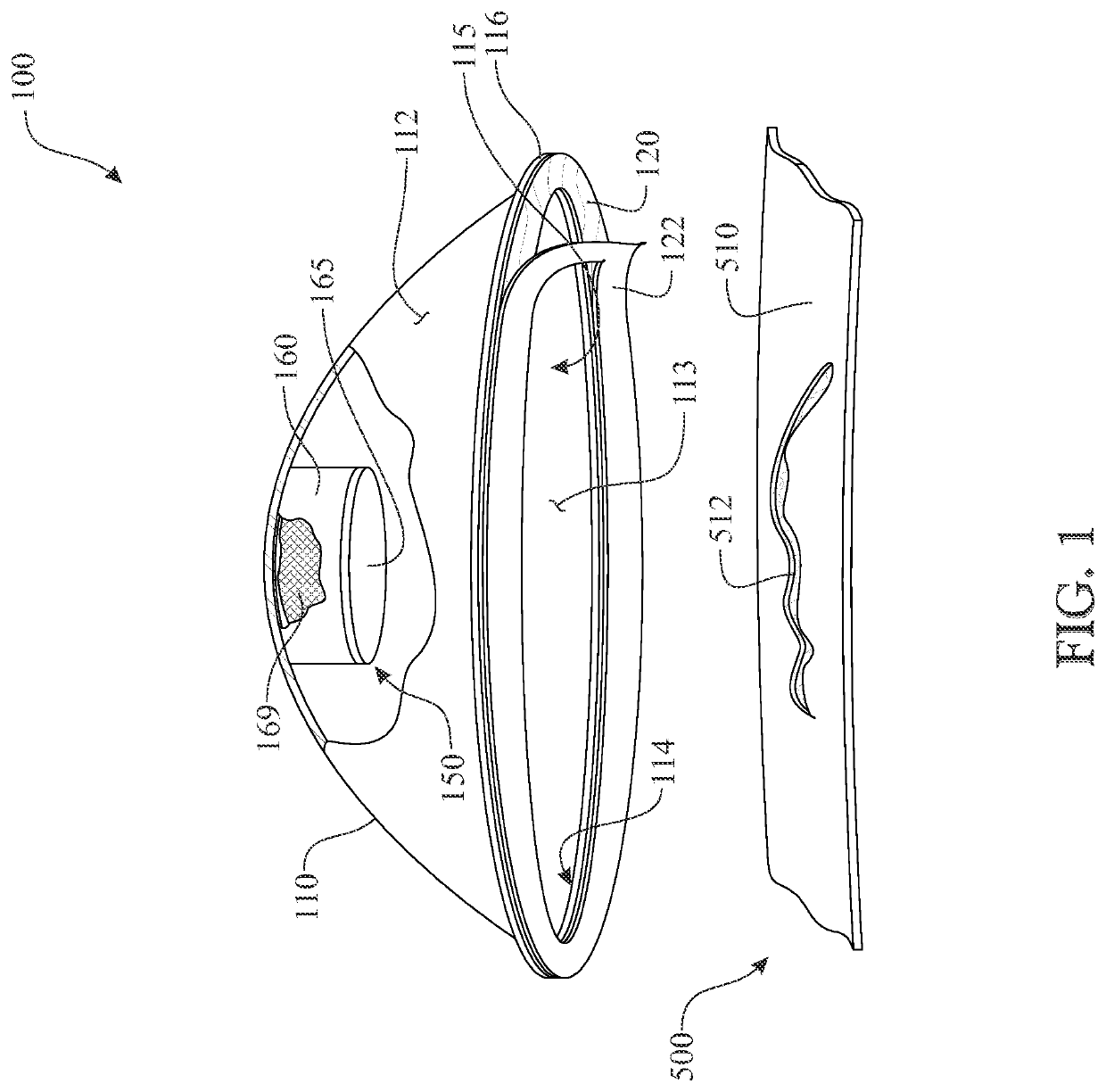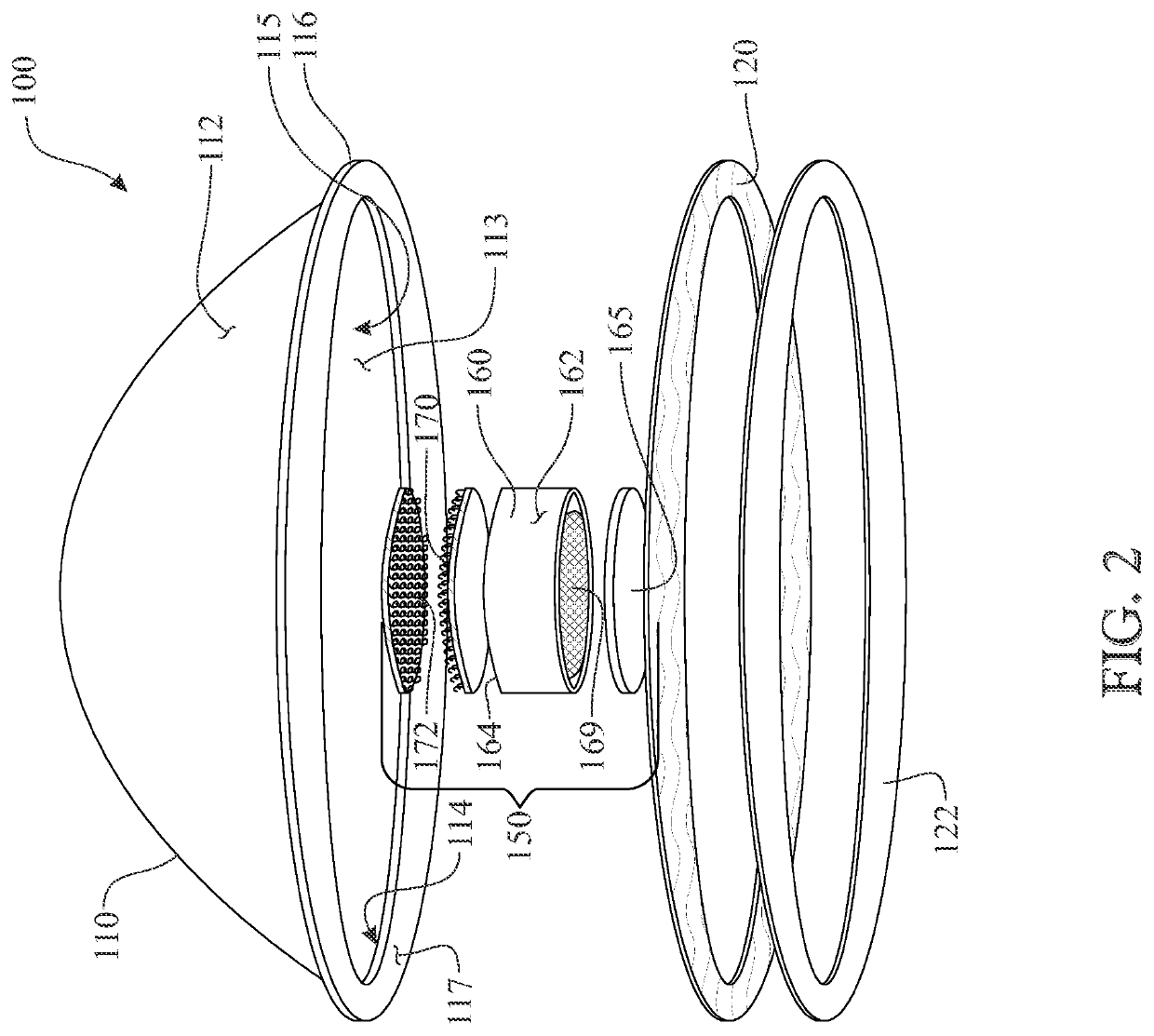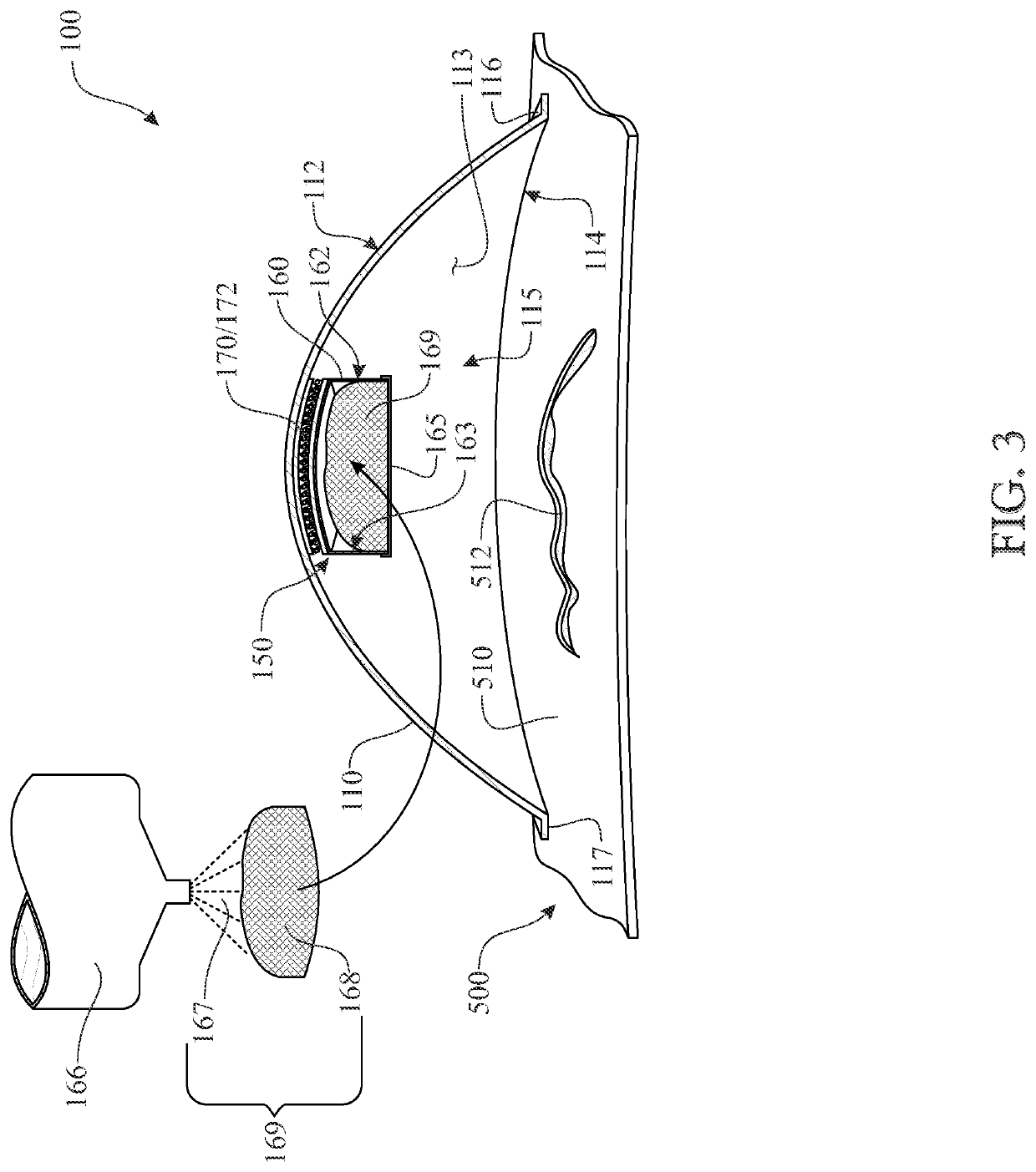Contactless wound treatment barrier and method of contactless wound treatment
a contactless wound and barrier technology, applied in the field of wound treatment, can solve the problems of irritating the wound, sepsis, tissue or limb amputation, or death, toxic pvp-i at the amount used, and severe local infection, so as to accelerate the drying and scab formation process.
- Summary
- Abstract
- Description
- Claims
- Application Information
AI Technical Summary
Benefits of technology
Problems solved by technology
Method used
Image
Examples
example 1
[0262]A small piece of polyuthetane foam 168 of 1 square inch and 0.25 inch in thickness was soaked in a 5% solution of elemental iodine in alcohol (3 mL) 167. The alcohol is allowed to evaporate at room temperature on a flat piece of glass, in the open air. The dry, iodine infused, foam is attached to the inside of a standard size dust face mask using a staple or any other suitable mechanical fastener. Alternatively, the iodine impregnated polyurethane foam 169 is encased in a screw capped or lid covered container 160, and affixed to the wound treatment barrier body interior surface 113 of the wound treatment barrier body 110 with an adhesive (replacing the dense hook segment 170 / dense loop segment 172. The screw cap or lid 165 is removed from the primed wound treatment composition storage and delivery container body 160 just prior to use.
example 2
[0263]A small piece of polyurethane foam 168 of 1 square inch and 0.25 inch in thickness is soaked in a 5% solution of elemental iodine in alcohol (3 mL) 167. The alcohol is not allowed to evaporate during the application and preparation process. The solution 167 is applied to the foam 168. The combination forming the primed wound treatment composition carrier 169 is attached directly to the wound treatment barrier body interior surface 113 of the wound treatment barrier body 110 using any suitable mechanical fastener, as described above.
example 3
[0264]A small piece of polyurethane foam 168 of 1 square inch and 0.25 inch in thickness is attached dry to the wound treatment barrier body interior surface 113 of the wound treatment barrier body 110, and then infused with the alcohol solution 167 in situ just before use.
PUM
| Property | Measurement | Unit |
|---|---|---|
| thickness | aaaaa | aaaaa |
| threshold | aaaaa | aaaaa |
| period of time | aaaaa | aaaaa |
Abstract
Description
Claims
Application Information
 Login to view more
Login to view more - R&D Engineer
- R&D Manager
- IP Professional
- Industry Leading Data Capabilities
- Powerful AI technology
- Patent DNA Extraction
Browse by: Latest US Patents, China's latest patents, Technical Efficacy Thesaurus, Application Domain, Technology Topic.
© 2024 PatSnap. All rights reserved.Legal|Privacy policy|Modern Slavery Act Transparency Statement|Sitemap



